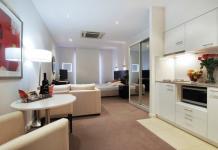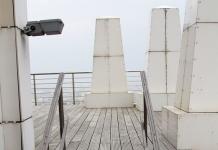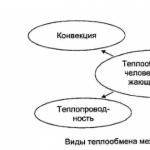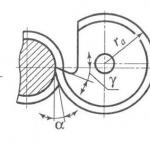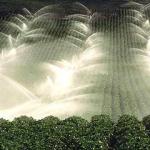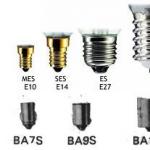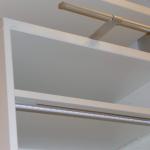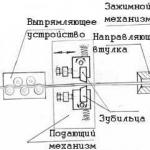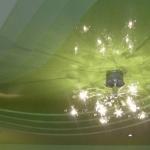FACTORS FORMING CHILDREN'S HEALTH.
According to the current opinion, on children's health, as well as the population as a whole, influenced by a large group of various factors (internal and environmental factors).
First of all, it is:
1. Parental health,. It is known that during the period of conception and intrauterine development, the foundations are laid for many hereditary diseases such as hemophilia, ataxia, color blindness, juvenile myopathy, hereditary chorea, numerous metabolic disorders, etc.
2. F power actors, lifestyle And social welfare often combined under the general name of SOCIAL FACTORS, however, due to the specificity of their influence on the body, it would obviously be correct to consider them separately from each other.
3. Epidemiological factors are among the most powerful causes of health problems.
Criteria and health groups.
The first group - children who do not have chronic diseases, did not get sick or rarely got sick during the observation period and have normal, age-appropriate, physical and neuropsychic development (healthy children, without deviations).
The second group - children and adolescents who do not suffer from chronic diseases, but have some functional and morphological abnormalities, and often (4 times a year or more).
The third group - children with chronic diseases or with congenital pathology in a state of compensation, with rare and not severe exacerbations of a chronic disease, without a pronounced violation of the general condition and well-being (patients in a state of compensation)
The fourth group - persons with chronic diseases, congenital malformations in a state of subcompensation, with impaired general condition and well-being after an exacerbation, with a protracted period of convalescence after acute intercurrent diseases (patients in a state of subcompensation).
The fifth group - children with severe chronic diseases in a state of decompensation, with significantly reduced functionality (patients in a state of decompensation).
1 Microclimate- a complex of physical factors of the internal environment of the premises, influencing the heat exchange of the body and human health. Microclimatic indicators include temperature, humidity and air velocity, temperature. According to the degree of its influence on the heat balance of a person, M. is divided into comfortable or neutral, uncomfortable: heating and cooling.
the following types of microclimate:
monotonous (its parameters change little during a work shift (weaving, sewing workshops, shoe production, mechanical engineering, etc.));
dynamic (rapid and significant change in microclimate parameters (steel-smelting, foundry shops, etc.)).
The influence of the microclimate on the human body
The microclimate has a significant impact on the human body. All vital processes in the body provide energy for physical activity, a smaller part of which is spent on useful work, and most of it is converted into thermal energy.
Heat exchange
Heat exchange between a person and the environment is carried out by convection, due to the release of heat from the surface of the human body to less heated layers of air flowing to it, thermal conductivity through clothing, radiation to surrounding surfaces, in the process of evaporation of moisture (sweat) from the surface of the skin, during breathing, and also by heating the inhaled air.
Chronic hyperthermia adversely affects the health and performance of a person, contributes to the occurrence of chronic hypoxic conditions, and aggravates the course of existing chronic diseases. This, in particular, manifests itself in a violation of water and electrolyte metabolism, an increase in the load on the heart muscle, hypertrophy (dystrophy) of the myocardium, damage to the vessels of the lower extremities (obliterating endarteritis), an increase in the load on the urinary system, and a decrease in working capacity.
2 Hygienic significance of the composition and properties of the soil
Section: soil hygiene
The doctrine of the soil as a special natural-historical body was created by the great Russian scientist V. V. Dokuchaev (1846-1903). He was the first to point out that the outer horizons of rocks, modified by the combined action of a number of factors: climate, vegetation, topography, and soil organisms, should be called soil. Thus, the soil is the upper layer of the earth's crust, which has fertility, formed under the influence of physical, chemical, biological and technical factors. Fertility is a distinguishing feature of the soil from all other species.
The soil is a huge natural laboratory in which a wide variety of complex processes of destruction and synthesis of organic substances, photochemical processes, continuously proceed.
Various pathogenic bacteria, viruses, protozoa, helminth eggs live and die in the soil. It has been proven that contaminated soil can directly or indirectly have toxic, allergenic, carcinogenic, mutagenic and other effects on the body.
Soil is made up of parent rock, dead organic matter, living things, air and water. The thickness of the soil ranges from a few centimeters to 3 m or more. Its area is only about i/10 of the area of the continents.
Soil self-purification is a complex physicochemical and biochemical process of turning pollutants into harmless ones for humans and animals, as well as for plants in contact with them. Such transformations occur in the soil environment itself, as well as when pollutants pass into the air, water, and flora.
3 OCCUPATIONAL HAZARDS (production hazards) - unfavorable health factors of the labor (production) process or unsatisfactory sanitary and hygienic working conditions.
Occupational diseases - arise as a result of exposure to the body of adverse factors in the production environment. Clinical manifestations of occupational diseases (diseases) often do not have specific symptoms, and only information about the working conditions of the sick person allows us to establish that the identified pathology belongs to the category of occupational diseases. Only some of them are characterized by a special symptom complex due to peculiar radiological, functional, hematological and biochemical changes.
5 groups of occupational diseases: 1) caused by exposure to chemical factors); 2) caused by exposure to dust (pneumoconiosis-silicosis, silicatoses, 3) caused by exposure to physical factors: vibration disease; diseases associated with contact
Measures to prevent adverse effects P.V. on the body are determined by their qualitative and quantitative characteristics and sources of education, the conditions of exposure to workers. The main directions of prevention are technical and organizational: improvement of technology (transition to continuous production processes, waste-free, environmentally friendly technology, complex mechanization and automation of production, which provides for a reduction in the formation of hazards and their impact on the working area, industrial site and the environment).
3 Occupational diseases associated with exposure to dust on the body.
Examples of sources of hazardous exposure to organic dust
Agriculture
Processing of grain, hay and other crops
sugarcane processing
Ensiling
Animals
Pens for pigs/cows
Poultry farms and processing plants
Laboratory animals, livestock and pets
Recycling
Waste water and sludge
household waste
Composting
Industry
Vegetable fiber processing (cotton, linen, foam, jute)
Fermentation
Logging and wood processing
Biotech processing
Polluted water in humidifiers
Microbiological cultures on structures or in ventilation ducts
Treatment and prevention of occupational respiratory diseases of dust etiology are based on the general principles of therapy for patients with bronchopulmonary pathology, however, they have their own characteristics. The conditions for their effectiveness are temporary or complete cessation of exposure to the etiotropic factor and elimination therapy.
The program for the treatment and biomedical prevention of dust respiratory diseases includes 6 main areas:
1. Strengthening the antioxidant protection of the respiratory organs with the help of antioxidant and antiperoxide drugs: ascorbic acid, atocopherol, enzymes - superoxide dismutase, catalase, peroxidase, etc. (in the form of inhalations), rutin, bemitil.
2. Increasing the resistance of alveolar macrophages that phagocytize fibrogenic dust with the help of active metabolites of the Krebs cycle, such as glutamic and malic acids, as well as succinic acid. Potassium iodide is also used.
3. Suppression of fibrogenicity of the most aggressive types of dust. When exposed to quartz - using nitrogen-containing polymers (polyoxidonium), asbestos - through the use of iron chelators and drugs that improve genome regeneration (rutin, deoxyferritin).
4. Activation of the processes of regeneration of the elastic framework of the lungs by ultrasonic inhalation of preparations of natural protease inhibitors. Contrical is used in the form of an aerosol in an isotonic solution of sodium chloride (contracal inhalations are carried out 1 time per day for a month).
5. Reduction of bronchial obstruction by long-term use of bronchodilator drugs with a predominantly anticholinergic effect in chronic obstructive bronchitis (COB). The basis of the basic therapy of COB is the inhaled anticholinergic ipratropium bromide (preparations Atrovent, Spiriva, Troventol, two inhalation doses 4 times a day).
6. Anti-inflammatory therapy using corticosteroids, immunomodulators, mucolytics (bromhexine, acetylcysteine, iodine-containing drugs), antibiotics in suppressing the oxygen-dependent bactericidal system of leukocytes, i.e. during the exacerbation of the process. Preference is given to broad-spectrum antibiotics, primarily macrolides (macropen, rovamycin, etc.), as well as third-generation cephalosporins.
1 Hygienic requirements for natural lighting in hospital premises, principles of its regulation, indicators characterizing natural lighting.
Premises with a permanent stay of people should, as a rule, have natural lighting - illumination of the premises with skylight (direct or reflected). Natural lighting is divided into side, top and combined (top and side).
Natural lighting of premises depends on:
Light climate Insolation regime - the duration and intensity of illumination of the room with direct sunlight, depending on the geographical latitude of the place, the orientation of buildings to the cardinal points, the shading of windows by trees or houses, the size of the light openings, etc.
Insolation is an important healing, psycho-physiological factor and should be used in all residential and public buildings with permanent residence of people, with the exception of certain rooms of public buildings,
Rationing and hygienic assessment of natural lighting of existing and planned buildings and premises is carried out in accordance with SNiP II-4-79 by lighting (instrumental) and geometric (calculation) methods.
The main lighting indicator of natural lighting of premises is the coefficient of natural illumination (KEO) - the ratio of natural illumination created at some point of a given plane inside the premises by sky light to the simultaneous value of outdoor horizontal illumination created by the light of a completely open sky (excluding direct sunlight), expressed in percentage:
KEO \u003d E1 / E2 100%,
where E1 is the illumination inside the room, lx;
2 Methods for improving the quality of drinking water for water supply to troops in the field.
According to the purpose of cleaning methods are divided into:
improving the organoleptic properties of water, i.e. properties perceived by the human senses: smell, taste, color, turbidity, temperature, films, etc.;
ensuring its epidemiological safety;
groundwater conditioning methods;
improving its gas composition after the removal of hydrogen sulfide, oxygen, methane, free carbon dioxide and other substances; Groundwater conditioning methods include softening, desalination and desalination, degassing, deferrization and demanganization, fluorination and defluorination, desiliconization and some other methods. Special methods for improving water quality include fluorination, defluorination, iron removal, deodorization, etc.
aimed at extracting difficult-to-oxidize organics, harmful products formed along the way during water treatment using reverse osmosis processes,
3Nutritional value and sanitary-hygienic assessment of grain products
Cereal products are the main source of carbohydrates and vegetable protein. More than 50% of a person's energy costs are covered by grain products (bread, cereals, pasta). The nutritional value of cereal products is shown in the table below. The content of biologically valuable substances: amino acids, vitamins, minerals - in various parts of the grain , shell, endosperm, aleurone layer) differ significantly.In this regard, the nutritional value of cereals and flour obtained from whole grains or freed from the shell and germ is different.
Sanitary and hygienic assessment of grain and leguminous products, their role in the nutrition of the population.
: 1) organoleptic (taste, color, smell)
2) foreign matter, acidity, fungi, pesticides
Appearance: assessment on a sheet of black paper (color, size, surface)
Taste: chewing 1-2 portions of 1 g
Trial brew: 50g in 100ml water without salt
Humidity
1 Physical properties of air (temperature, humidity, atmospheric pressure, air velocity, radiant heat, surface temperature) and their significance for the body.
To the physical properties of air affecting the human body
include air temperature, humidity, mobility, solar radiation,
radioactivity and the electrical state of the atmosphere.
AIR TEMPERATURE.
Air temperature
formed by soil temperature. The sun's rays warm the soil and
radiation from the soil is formed by the air temperature. It is clear that the higher
lower air temperature. The main value of the temperature factor is
influence on human heat transfer. The average person needs 2800 calories per day.
Of these, he spends about 600 on work, and gives the rest to the environment.
There is a constant heat exchange between the environment and the body. Allocate
3 main ways of heat transfer of the human body:
1. heat radiation, approximately 44% of the heat is given to them. Heat radiation is
heat transfer to surrounding objects.
2. Heat conduction. It accounts for 31% of the heat. There are 2 here
factor: conduction and convention. Conduction is the transfer of heat when
direct interaction with the subject. Convection is the transfer of heat
surrounding bodies of air.
3. Evaporation -- 21% heat recovery.
2 Fundamentals of labor physiology. Types and forms of labor activity. Changes in the human body in the process of work and performance.
Fundamentals of labor physiology.
Labor physiology is a science that studies changes in the functional state of the human body under the influence of labor activity and develops physiologically based norms (forms) of organizing the labor process that help prevent fatigue and maintain a high level of efficiency.
The generally accepted classification system for the main forms of labor activity is the physiological classification.
Its essence is that any labor changes the functional state of a person and, depending on this state, forms of labor are classified.
Types and forms of labor activity. human
In total, 6 forms of the main labor activity of a person are distinguished.
1. Forms of labor that require significant muscle activity.
They are characterized by high stress of physical strength and the need for a long (up to 50% of working time) rest.
2. Group forms of labor (conveyor).
Monotony - one of the main negative features of such work, leads to premature fatigue, rapid nervous exhaustion, loss of attention, reduced speed, reaction and excitability.
3. Mechanized forms of labor.
4. Forms of labor associated with partially automated production.
The direct processing of the object is carried out by the mechanism. The task of a person is limited to the maintenance of this mechanism (installation of parts, start-up, process control, etc.). It is characterized by monotony, loss of creativity, high responsibility and constant being in a state of "operational waiting".
5. Forms of labor associated with the management of production processes and mechanisms.
Two main forms of process control
6. Forms of intellectual (mental) work. This is the work of engineers, doctors, teachers, artists, etc. They are characterized by the need to process a large amount of various information with the mobilization of memory, attention, frequent stressful conditions and, as a rule, insignificant physical activity, which gives rise to pathology of the cardiovascular system (hypogenesis, hypodynamia).
3 Nutritional value and hygiene assessment of milk and dairy products
The nutritional value of milk and dairy products is determined mainly by the content of protein, fat, some vitamins, macro- and microelements and energy value.
In Russia, cow's milk is mainly consumed, but in some regions milk of other animal species is obtained and used. Milk contains more than 90 components, 20 balanced amino acids, about 20 fatty acids, 25 different minerals in significant amounts and 12 vitamins.
Milk is divided into casein (75% casein or more) and albumin (50% or less casein). Casein includes cow's and goat's milk, albumin - mare's and donkey's.
Milk is a valuable source of thiamine and riboflavin. The amount of vitamins A, O and B-carotene depends on the season.
Calcium and phosphorus are found in milk in a balanced state for absorption. Trace elements, including zinc, iron and copper, are associated with both proteins and fat globules.
Veterinary and sanitary examination of milk and dairy products
Research:
· organoleptic;
determination: density, fat content and dry residue of milk, acidity, purity, bacteriological examination for reductase with methylene blue, examination for mastitis, water content in cottage cheese;
falsification of milk and dairy products.
Acidity of milk: in Turner degrees (number of ml of sodium hydroxide solution (0.1) to neutralize 100 ml of milk). Norm: 16-19. More is stale, less is dilution.
Density of milk.milk hydrometerlactodensimeter.
2 CLIMATE, long-term weather patterns in a given area. The weather at any given time is characterized by certain combinations of temperature, humidity, wind direction and speed. In some types of climate, the weather changes significantly every day or seasonally, in others it remains the same. Climate descriptions are based on statistical analysis of average and extreme meteorological characteristics. As a factor in the natural environment, climate influences the geographic distribution of vegetation, soils and water resources and, consequently, land use and the economy. The climate also affects the conditions of life and human health ) to protect against adverse external influences and create a comfort zone.
The use of the climatic factor in medicine
Climatotherapy is the rational and purposeful use of the climate and its individual elements, carried out for therapeutic purposes, in conditions of a strict dosage of the procedures sold, taking into account seasonal and weather conditions. At the same time, attention is drawn to the nature of the body's responses to the ongoing impact of climatic factors.
Climatic factors are currently used as a therapeutic agent in the treatment of very many diseases. In addition, climatic factors are widely used in healthy people, pursuing the task of strengthening the body, hardening it, increasing vitality and working capacity.
3 Food poisoning of unspecified etiology), preventive measures.
Diseases with unknown etiology include alimentary paroxysmal-toxic myoglobinuria and Urov's disease.
Alimentary paroxysmal-toxic myoglobinuria) The disease is manifested by sudden attacks of acute muscle pain, so severe that the patient completely loses mobility. The disease is based on dystrophic and necrotic processes in the muscles, as well as impaired renal function and impaired central nervous system. Urovskaya disease) Its etiology has not yet been finally elucidated. There are two theories explaining the cause of this disease: biogeochemical and alimentary-toxic. According to the first of them, Urov's disease is considered as strontium rickets (toxicosis), caused by an increased content of strontium against the background of a low level of calcium in the soil, water bodies, food, and drinking water.
Clinic. The disease is manifested by deformation of the joints of the upper and lower extremities with limited mobility in them. There is a significant thickening of the interphalangeal, elbow, ankle joints. The disease begins at the age of 6-7 years, proceeds slowly, gradually. The disease develops as a result of a dystrophic process in the articular and epiphyseal cartilages. Epiphyseal cartilages (growth zones) undergo ossification early, which causes the shortening of tubular bones.
1Hygienic requirements for artificial lighting in hospitals. Types of artificial lighting, methods of measurement, principles of regulation, impact on health and performance.
The main sources of artificial lighting are incandescent and fluorescent lamps.
The following hygienic requirements are imposed on artificial lighting:
illumination not below the established norms;
elimination of the blinding effect of light sources;
Uniformity of illumination, its constancy over time:
Limitation of sharp shadows;
Approximation of the spectrum of light sources to the spectrum of daylight.
When evaluating artificial lighting, pay attention to:
Type of light source (incandescent lamps, fluorescent lamps):
Lighting system (general, local, combined);
Type of lighting fixtures (direct, reflected, diffused light);
The height of the suspension and the order of placement of lighting fixtures; The sufficiency of artificial lighting is determined by photometric and calculation methods.
In the first method, various types of light meters are used:
Luxmeter Yu-16 consists of a photocell and a galvanometer attached to it. When light rays fall on the receiving part of the photocell in its photoactive layer - selenium, an electron flow occurs on the border with a gold or platinum film (the phenomenon of the photoelectric effect). It creates a photocurrent in the external circuit, which deflects the galvanometer needle by an angle, the value of which will correspond to the intensity of illumination. If the galvanometer needle goes beyond the scale, light-absorbing nozzles are used. In this case, the readings of the galvanometer are increased by 10 - 1000 times. To measure the illumination, the luxmeter is installed horizontally on the surface under study.
2 Weather, its definition, medical classification of weather types, impact on the body. Meteotropic diseases, their prevention
Weather is the state of the atmosphere in a certain period of time (at a given minute, day, month, season), characterized by a combination of meteorological quantities (temperature, humidity, pressure, wind speed, etc.) and phenomena (fog, ice, snowstorm, storm , tornado, etc.).
The main feature of the weather is its variability, instability.
A healthy person, thanks to good adaptive capabilities, quickly adapts even to significant weather fluctuations. Weather changes have a training effect on a healthy body.
TYPES OF WEATHER, THEIR HYGIENIC CHARACTERISTICS,
IMPACT ON THE ORGANISM
There are three clinical types of weather:
1) clinically optimal;
2) clinically irritating;
3) clinically acute.
The clinically optimal type of weather favorably affects the human body, causes a cheerful mood,
sparing effect and is characterized by moderate fluctuations during the day in temperature (no more than 2 ° C) and pressure (no more than 4 mbar) with low air mobility (no more than 3 m / s).
Meteotropic are all types of reactions of the human body that develop under the influence of weather factors.
a decrease in performance, i.e. are non-specific.
Meteotropic reactions have a significant impact on the course of the following diseases:
1. Diseases of the circulatory system
2. Bronchopulmonary diseases
3. Neuropsychiatric diseases
4. Other diseases (rheumatic, surgical, digestive)
Prevention of meteotropic reactions. ... weather conditions worsen the general condition and exacerbate the underlying disease. ... and coronary heart disease), limits their motor mode, physical activity,.
3 Botulism: causes, clinic, diagnosis, prevention.
Botulism
It belongs to the most severe food poisoning. Botulism occurs when eating food containing botulinum bacillus toxins. The causative agent of botulism is widely distributed in nature; it lives in the intestines of warm-blooded animals, fish, humans, rodents, birds, cats, in the soil, in the silt of reservoirs, etc. the bacillus, which is a strict anaerobe. There are six types of botulinum bacilli (A, B, C, D, E, F). Type A is the most toxic.
Therefore, if a toxin has already accumulated in a food product, then canning the product - salting, freezing, pickling - does not inactivate it.
The causative agent of botulism is capable, under favorable conditions, of reproduction and toxin formation in any products of both animal and vegetable origin. It was found that the most common cause of botulism are canned foods. As a result of the development of microbes and the hydrolysis of protein and other substances, gases can accumulate in canned food, causing persistent swelling of the bottom of the can (bombing).
Botulism is an extremely serious disease, characterized by high mortality (60-70). The first signs of the disease are malaise, weakness, headache, dizziness and often vomiting. Then visual impairment symptoms appear (weakened vision, double vision, trembling of the eyeballs, drooping eyelids). Voice becomes weak, swallowing and chewing are difficult.The duration of the disease is different, on average - from 4 to 8 days, sometimes up to a month or more.
Anti-botulinum serum is a highly effective therapeutic agent, the timely administration of which prevents death.
1 Occupational health of adolescents. Professional orientation and medical-professional consultation.
A large number of teenagers work at enterprises, collective farms and state farms. In this regard, the task is: to study the impact of working conditions on the health of working adolescents and, based on taking into account the anatomical and physiological characteristics of their body and identifying the nature of the development of adaptive mechanisms in the process of work and the impact of factors in the working environment, develop recreational activities that contribute to the creation of optimal working conditions, preservation and health promotion.
Changes in technology, mechanization and automation of production, the development of sanitary equipment can radically change working conditions.
Medical professional consultation is a system of measures aimed at ensuring the correct choice of profession by adolescents with health problems in order to protect their body from the adverse effects of occupational factors that can lead to the progression of functional disorders and chronic pathology, the occurrence of complications, long-term disability, early disability.
2 Diseases associated with a forced position of the body, muscle strain and physical inactivity. Prevention measures.
During a long forced standing position, you need to change your position as often as possible, do not wear uncomfortable shoes, and take foot baths with herbs or sea salt after work. Shown are also contrast showers, hiking and swimming hypodynamia. weakening of muscle activity due to a sedentary lifestyle and limitation of motor activity. Physical inactivity is also called the disease of the century and the flip side of progress. The truth of this statement, unfortunately, is obvious.
1The process of increasing the number of urban settlements, leading to the growth and development of cities, is called urbanization.
It is a powerful environmental factor, accompanied by the transformation of the landscape, land and water resources, the mass production of waste entering the atmosphere, water and terrestrial ecosystems. Urbanization has posed a number of environmental problems for mankind, among which the most acute are the vulnerability of urban systems, migration and concentration of the population, poor quality of habitat, loss of fertile land, and waste disposal.
Urbanization is an objective process determined by the needs of society, production, and the nature of the social system. However, the growth of the urban population, especially in recent decades, has turned out to be so rapid that the environment of many cities in the world is no longer able to satisfy many of the biological and social needs of modern man. A large city changes almost all components of the natural environment - the atmosphere, vegetation, soil, relief, hydrographic network, groundwater, soil, and even climate.
2 Industrial dust.
Industrial dust is called suspended in the air, slowly settling solid particles ranging in size from several tens to fractions of microns. Many industrial dusts are aerosols. According to the particle size (dispersion), visible dust is more than 10 microns in size, microscopic - from 0 25) microns, ultramicroscopic - types of industrial dust are divided into organic, inorganic and mixed. The former, in turn, are divided into dust of natural (wood, cotton, wool, etc.) and artificial (dust of plastics, rubber, resins, etc.) origin, and the latter - into metal (iron, zinc, aluminum, etc.) and mineral (quartz, cement, asbestos, etc.) dust. Mixed types of dust include coal dust containing particles of coal, quartz and silicates, as well as dust generated in chemical and other industries.
The specificity of the qualitative composition of dust determines the possibility and nature of its action on the human body. The shape and consistency of dust particles are of certain importance, which largely depend on the nature of the source material. So, long and soft dust particles are easily deposited on the mucous membrane of the upper respiratory tract and can cause chronic tracheitis and bronchitis. The adverse effect of dust on the body can cause diseases. Usually, specific (pneumoconiosis, allergic diseases) and non-specific (chronic respiratory diseases, eye and skin diseases) dust lesions are distinguished.
3 Diseases of protein-energy malnutrition
With insufficient intake of proteins and energy, lean body mass and the amount of adipose tissue decrease, and one of these changes may be more pronounced.
Protein deficiency is a pathological condition that develops as a result of a reduction or cessation of protein intake into the body. It can also be due to increased protein breakdown in the body, for example, with burn disease, severe trauma, purulent-septic disease.
There are two syndromes of protein-energy malnutrition: 1) (calorie deficiency), manifested by stunted growth in children, loss of adipose tissue without edema, and 2) (protein deficiency), manifested by hypoalbuminemia, generalized edema, dermatitis, enlargement and fatty degeneration of the liver and relative to stored adipose tissue. These syndromes rarely exist in a pure form and tend to overlap.
Prevention:
1) The daily diet should correspond in energy value to the energy consumption of the body
2) The physiological needs of the body must be provided with nutrients in quantities and percentages that have the maximum beneficial effect
3) The chemical structure of food should correspond as much as possible to the enzymes of the digestive system of the body (correspondence rules)
4) The food ration should be distributed throughout the day
With 3 meals a day: Breakfast - 30%: Lunch - 45%: Dinner - 25%
With 4 meals a day: Breakfast - 25%: Second breakfast - 15%: Lunch - 35%: Dinner - 25%
The quality of the conditions in which a person works directly affects the productivity of his work. Employers know this. They are obliged to provide normal comfortable conditions for their employees, not only to obtain good performance, but also to preserve the health of each employee.
The impact of the microclimate on the human body is significant. Subject to the norms of all parameters, by the end of the working day, a person gets tired less, retains vigor and good mood. The microclimate of the workplace is the state of the internal environment in which the employee is 7-8 hours.
The norms are prescribed in the main document SanPiN 2.2.4.548-96, compliance with which is mandatory for every production and office manager. It indicates the parameters of air temperature, humidity, noise level, in which the human body functions fully without feeling discomfort. Only then is human health preserved.
Modern man spends 4/5 of his life indoors. Half of this time he is at work. Production facilities in many cases want to leave the best. They contain a high content of microbes, dust particles, chemical compounds, and many other impurities that adversely affect the lungs and the body as a whole. Even in offices, the air is dry, filled with paper dust and toxic emissions and radiation from computers and other office equipment.
The retina becomes inflamed, the head hurts, the nose is blocked, the throat tickles - these are just a few visible symptoms of dirty air in the room. The microclimate consists of a combination of comfortable air temperature, its humidity, and the speed of air flow. The state of heat exchange depends on this.
Thermal regime
The human body has a constant temperature - +36.6 degrees. The body functions normally only when heat enters the environment through evaporation, radiation. The room can be very dry when the heating system is working intensively in winter and hot in summer. Mucous membranes evaporate moisture and dry up. Microbes get into small cracks, and the inflammatory process begins.

Together with water, salts leave the body. And they retain moisture in the cells. Dehydration is a serious problem. The intestines, kidneys do not work well, the blood becomes thick and viscous, which makes it difficult to move through the vessels. The heart works hard. With sweat, a person can lose 3-4% of his mass. But this unhealthy weight loss is the loss of life-giving moisture by the body. Humidity in the room should be maintained at a level of at least 40-70%.
Due to the high air temperature in the room, overheating of the human body can occur. He may get heatstroke or high blood pressure. Drafts are also unacceptable in a hot room.
Working in the cold causes a decrease in the normal body temperature of a person, which leads to hypothermia and a slowdown in physiological processes. As a result, frostbite, hypothermia of the respiratory tract, colds, bone and joint pain can occur. The influence of microclimate parameters on a person's well-being is of great importance, as it affects the state of health, working capacity, and psychological state.
Standards for comfortable conditions of the internal environment
If a person feels good, he is calm, attentive at the workplace. So, he is healthy, protected from injuries at work. The employee is satisfied, he treats the employer with respect and gratitude, works with pleasure and diligence, and the manager saves on disability payments and on training new employees.
The air must be clean and warm. For a room with a floor-to-ceiling height of 2 m where people work, the thermometer should show:
- In summer + 20-22C;
- In winter + 18-22C;
- When working outdoors, the air temperature is +7-10C.
The speed of movement of air masses is 0.2 m / s, industrial dust and toxic substances in percentage terms do not exceed 0.8. Humidity of the atmosphere in the room - 40 - 50%.

Table. Optimum microclimate performance
at workplaces in industrial premises.
Assessment of the state of the microclimate
Indicators of the state of climatic conditions in the premises may vary depending on the nature of the activities of workers.
Types of industrial premises:
- Office. If the work is not associated with intense physical activity and activity, the air temperature should be slightly above average. For example, in an office, in an office where employees sit at tables, this figure is + 22-24C. Surfaces with which people come into contact + 21-25C. Air humidity - 50-60%. Air movement - minimal.
- Production shop, warehouse. If an employee works intensively, performs many operations with the expenditure of physical strength, the room should be cooler, since the body's heat exchange is more active. The thermometer in such workshops, warehouses, shops should control the air temperature at around 18-20C, air humidity - 40-60%. Production rooms should be well ventilated with a ventilation system.

Table. Minimum number of temperature measurement sections,
relative humidity and air velocity.
The microclimate that affects human health can be maintained by performing a number of activities:
- heating or cooling of air with climate control devices, heating operation;
- automation of production processes and movement of products, control of mechanisms at a distance;
- remove from the working area processes associated with emissions of toxic substances, the formation of harmful radiation; installation of air filtration.
Sometimes it is not enough to install air conditioners. They move cool air indoors. They often accumulate dust, harmful substances. At high humidity, pathogenic microorganisms can develop on the filter mesh. In enterprises with a large crowd of people and many technological processes, a powerful ventilation system with clean air intake outside the production area is needed. In hazardous areas, safety workers are required to use respirators that purify the inhaled air.
The impact of microclimate on health
Constant work in a cold room is very harmful to the body. Hypothermia provokes cardio - vascular, colds, the spine and joints suffer, peptic ulcers of the stomach, intestines, thrombophlebitis become aggravated.
Systematic overheating of the body threatens with common diseases - headaches, weakness, intense sweating, increased blood pressure, arrhythmia, heat stroke.
If the employer cannot provide the conditions required by SanPin for objective reasons, then the production is considered harmful. Employees must be informed about the conditions of activity when applying for a job. For harmfulness there is a system of surcharges and benefits.
In any case, the leader should strive to facilitate the work of his subordinates. In hot rooms - in the kitchens of catering establishments, laundries, you can set additional breaks during working hours or strengthen the cooling system with additional air conditioners.
Compliance monitoring
The parameters of the microclimate and their impact on the human body are checked by specialists who have the knowledge and tools to measure the parameters that determine the working conditions. Each enterprise has an occupational safety engineer or personnel officer, who is assigned the responsibility of monitoring this issue.
Enterprises, even large ones, do not have their own service for assessing working conditions. But when licensing, the conclusion of specialists in this section is sure to come in handy.
Therefore, special accredited organizations can be involved in the work:
- centers of sanitary and epidemiological surveillance;
- laboratories authorized to carry out measuring work.
Based on the results of the inspection, specialists issue a report that indicates all the parameters of working conditions. They provide recommendations for correcting violations.
Home microclimate and its impact on humans
A full-fledged active and healthy rest is possible only in a warm, ventilated house.
Lucky are those who have a wooden house. The tree itself regulates the microclimate, creating an optimal level of humidity. Air is exchanged through pores and crevices. Wood retains heat well.
But even in a high-rise apartment, it is necessary to monitor the air that adults and children breathe. During the operation of the heating system, the air becomes dry. Children are especially sensitive to it. Pershit throat, dry crusts appear in the nose, lips crack. To increase humidity, it is necessary to install special devices - humidifiers. They give off a cool vapor that makes breathing easier. Wet sheets or battery operated towels also help.
At any time of the year, the rooms must be ventilated. Synthetic materials that are used in interior decoration emit toxins and odors. They stagnate and negatively affect the respiratory and immune systems. Air conditioners help regulate the temperature. They can both cool and heat the air.
INFLUENCE OF MICROCLIMATE PARAMETERS ON HUMAN FEELING
INTRODUCTION
The parameters of the microclimate have a direct impact on the thermal well-being of a person and his performance. For example, a decrease in temperature and an increase in the speed of air movement contribute to an increase in convective heat transfer and the process of heat transfer during the evaporation of sweat, which can lead to hypothermia of the body. An increase in the speed of air movement worsens health, as it contributes to an increase in convective heat transfer and the process of heat transfer during sweat evaporation.
When the air temperature rises, the opposite occurs. Researchers have found that at an air temperature of more than 30 0 C, a person's performance begins to decline. For a person, maximum temperatures are determined depending on the duration of their exposure and the means of protection used. Temperature uniformity is essential. The vertical gradient should not go beyond 5 0 С.
A person's tolerance for temperature, as well as his sense of heat, largely depends on the humidity and speed of the surrounding air. The higher the relative humidity, the less sweat evaporates per unit time and the faster the body overheats.
Insufficient air humidity can also be unfavorable for a person due to intensive evaporation of moisture from the mucous membranes, their drying and cracking, and then contamination with pathogens. Therefore, when people stay indoors for a long time, it is recommended to limit the relative humidity in the range of 30 ... 70%.
CALCULATED PARAMETERS OF THE INTERNALAIR
Indoor air parameters must meet hygienic and technological requirements. The meteorological conditions of the air environment in the working area of industrial premises, based on hygienic requirements, are regulated by GOST 12.1.005-76 “Working area air”. A working area is taken to be a space up to 2 m above the floor level or a platform on which there are places of permanent or temporary stay of workers.
The parameters of the air environment in the serviced area of premises of residential and public buildings and auxiliary buildings of industrial enterprises are regulated by SNiP II-33-75.
The norms establish the optimal and permissible microclimatic conditions in the premises, depending on the category of work performed and the excess of sensible heat for the cold, transitional and warm periods of the year.
Optimal microclimatic conditions- a combination of microclimate parameters, which, with prolonged and systematic exposure to a person, ensure the preservation of the normal functional and thermal state of the body without straining thermoregulation reactions.
Permissible microclimaticue conditions- combinations of microclimate parameters, which, with prolonged and systematic exposure to a person, can cause transient and rapidly normalizing changes in the functional and thermal state of the body and the stress of thermoregulation reactions that do not go beyond the physiological adaptive capabilities of a person.
In industrial premises it is necessary to periodically control the parameters of the microclimate. This is done using a number of instrumentation (thermometers, psychrometers, hygrographs, anemometers).
August's thermometers and psychrometers are installed in workshops on walls or columns. For particularly accurate measurements, a portable Assmann aspiration psychrometer is used, the thermometer balls of which are in a stream of air moving at a constant speed.
When monitoring microclimate parameters, along with objective measurement data, one should keep a record (record) of the subjective sensations of workers: heat sensations, sensations of movement and air humidity, clothing comfort, working conditions and a general personal assessment. Analysis of the data obtained in this way makes it possible to develop measures to create meteorological parameters of the air in industrial premises, ensuring the comfort of the environment
Permissible and optimal parameters of microclimatic conditions for works of category II according to GOST 12.1.005-76 are given in Table. 1.
In industrial premises in which, according to the conditions of technology, artificial maintenance of a constant temperature or temperature and relative air humidity is required, it is allowed to take the temperature and relative humidity of the air within the optimal parameters (+ 2 0 C, but not more than 25 0 C) in all periods of the year for warm and cold periods of the year for this category of work and the characteristics of the production facility.
Table 1.
|
Parameter view |
Air temperature, 0 С |
Relative humidity, % |
|
Cold and transition periods of the year |
||
|
Optimal admissible |
||
|
Warm period of the year |
||
|
Optimal Permissible indoors with excess sensible heat up to 23 W/m3 With excess sensible heat over 23 W/m3 |
Not more than 3 0 С above the average outdoor air temperature at 1 pm of the hottest month, but not more than 28 0 С Not more than 5 0 С above the average outdoor air temperature at 1 pm of the hottest month, but not more than 28 0 С |
At 28 0 С no more than 55; at 27 0 C - no more than 60; at 26 wasps - no more than 65; at 25 0 C - no more than 70; at 24 0 C and below - no more than 75 |
The numerator shows data for the category of work IIa, the denominator - for the category of work IIb.
PURPOSE OF VENTILATION, AIR CONDITIONING AND HEATING SYSTEMS
Ventilation is designed to maintain indoor air parameters that meet hygienic and technological requirements, i.e. ensure good health, performance and health of people, and the normal course of the technological process.
Under the ventilation system is understood a set of devices that contribute to the removal of harmful emissions from the premises and the supply of clean air to the premises in order to maintain the state of air in them that meets the requirements of sanitary standards.
In rooms for various purposes, it is necessary to maintain at a constant level the parameters of the air environment that are favorable for a person and the technological process, regardless of changes in external atmospheric conditions and the mode of release of moisture, harmful vapors, gases, etc.
The process of creating and maintaining certain parameters of the air environment, which do not depend on the external parameters of the air, is called air conditioning. Air conditioning is a type of ventilation, the highest stage of its development and is distinguished by a more complete air processing.
The complex of technical means and devices for preparing air with specified parameters and maintaining an optimal or specified state of the air environment in the room (regardless of changes in external and internal factors) is called an air conditioning system. The air conditioning system allows you to automatically maintain the specified temperature, humidity, air mobility, its purity, gas composition, content of light and heavy ions, and in some cases a certain barometric pressure.
Heating is designed to compensate for heat losses through the building fences of the premises during the cold season and maintain the required air temperature in them.
AIR HUMIDITY
Atmospheric air consists of a dry part and a certain amount of water vapor, so it is called moist air. The composition of the dry part of the air includes (% by mass): nitrogen 75.5, oxygen 23.1, carbon dioxide 0.05 and inert gases 1.3, as well as a small amount of hydrogen and ozone. With sufficient accuracy for technical calculations, we can assume that moist air obeys all the laws of a mixture of ideal gases.
The state of air is characterized by pressure, temperature, density, humidity, moisture content and enthalpy.
Humidity. The absolute humidity of moist air is the ratio of the mass of water vapor M p (g) to the volume V (m 3) humid air. According to Dalton's law, the volume of humid air is equal to the volume of water vapor, so the absolute humidity of the air is 1000 times the density of water vapor and can be written as
w p = 1000M p/V
= 1000rg,
where w p is the absolute humidity of the air, g / m 3.
If the air is saturated with water vapor, then at a certain temperature the saturation limit will come. The absolute humidity of the air at full saturation is called the moisture capacity and is denoted by w us.
Relative humidity is the ratio of absolute air humidity to moisture capacity at the same temperature:
φ \u003d w p / w us \u003d P p / R us.
Using the equation of state of the gas (2.3), we can represent
P n = p n/(R n T)
and R us = p us /(RPT) .
φ = R n / P us, (2.7)
P us = f( t)
.
(2.8)
Therefore, the relative humidity of the air can be considered as the ratio of the partial pressures of water and saturated vapors at the same temperature.
d = 1000M n / mv,
Where d - moisture content, g/kg; m n is the mass of water vapor, kg; M in - the mass of the dry part of the air, kg.
Given that the volumes of steam and dry air are the same, we can write
Substituting into formula (2.9) the values of РВ (2.4) and (2.5), we obtain also РР according to the formulas
d
= 1000R in r p / (R p r in) .
Knowing that R in \u003d 287 kJ / (kg * K) and R p \u003d 460 kJ / (kg K), we get d
=
623 R p / R in. Using expressions (2.1) and (2.7), we can write
d=623φР us / (Р b - φР us) . (2.10)
CLOTHING INDUSTRY
Let us consider the processing processes in air conditioning systems to create the required parameters of the air environment in the working area at a garment factory located in Moscow at 56° N. latitude. The workshop in question is located on the third floor of a five-story building. Its width is 24 m, length is 48 m, height is 2 m, floor area is 1152 m 2 and floor space is 4838.4 m 3 .
Table 1 Technological equipment of the sewing workshop
|
Equipment identification |
brand or series |
Quantity set |
||
|
Universal |
212-115105 / E 112 "Durkopp" |
|||
|
Universal |
MO-816-DF4/TOO1 "Dzhuki" |
|||
|
Universal |
570-2 PO "Podolskshveymash" |
|||
|
Special |
397-M PO "Podolskshveymash" |
|||
|
Special |
LN-115 2 SN-413 / MO 16 "Juki" |
|||
|
Special |
2001 "Necky" |
|||
|
Special |
IAN 1405 Necks |
|||
|
Special |
IAN 1611 Necks |
|||
|
Special |
IAN 1441 Necks |
|||
|
Special |
51-A PO "Podolskshveymash" |
|||
|
Weathering and ironing (pocket valve press) |
PV-1 "Legmash" |
|||
|
PM-1 "Legmash" |
||||
|
UTP-1, 5E "Legmash" |
||||
|
false press |
7-96 MOMZ TSNIISHP |
|||
|
Finishing section |
||||
|
KSSU "Pannonia" |
||||
|
KDFV "Pannonia" |
The total number of simultaneously employed workers Pl = 151 people.
The outer walls are made of clay bricks on a cement-sand mortar and are 51 cm thick.
The light openings are made in separate wooden bindings with a size of 2.5x4.5 m, with a heat transfer resistance of 0.42 m 20 C / W. Glazed surfaces with an area of 78.75 m 2 are oriented to the east and 78.75 m 2 to the west. The total area of filling the light openings is 157.5 m 2 .
The characteristics of the technological equipment are given in table. 1.
Heat balance equation for the summer season
The total amount of heat input for the warm period of the year
Moisture release from people is 102 g / h, or 0.102 kg / h
Moisture release from WTO equipment - presses and irons
where W pr.1 is the amount of moisture released by one press (pos. 11,15,16.,
tab. 1) equals 1.4 kg/h, and pos. 12.14 - 0.2 kg/h;
Up.1 - the amount of moisture released by one iron - 0.5 kg / h;
and - the number of presses and irons.
The total moisture release by the equipment will be
The total moisture release in the sewing shop will be
The process of air treatment in the thermal season for a sewing workshop.
The binding effect will be:
By warmth
For moisture -
The necessary air exchange is determined by two harmful emissions:
By the warmth
By moisture
table 2 Air parameters for the warm period of the year
|
Name of points |
φ,% |
𝒊 , kJ/kg |
d, g/kg |
|
We take a large value for calculation and determine the volumetric amount of air
Heat exchange rate
Since the air exchange rate is high (17.9 1 /h), before being supplied to the workshop, the air must be cooled by adiabatic humidification in the air conditioner spray chamber - the NK process; point K will be obtained at the intersection of the adiabat 𝒊 n - const and relative humidity φ k = 90%. With the parameters of the point K, the supply air enters the workshop, where it absorbs heat and moisture from the workshop - the KC 1 process.
Mass air quantity
by teplukg/h
by moisture
Volumetric air quantity
Air exchange rate in the sewing workshop
which meets the requirements for sewing shops.
Thus, we accept in the warm season the air supply to the workshop with preliminary cooling in the irrigation chamber.
Heat balance equation for the cold period of the year
Let's make the heat balance equation for the cold period of the year. Heat dissipation during the cold season
36941 + 15100 + 46080 = 98121 W
The total heat loss in the sewing shop is determined taking into account the specific thermal characteristics of the building. In typical multi-storey buildings of sewing shoe factories, the specific thermal characteristic for shops located on the top floor ranges from 0.24 to 0.35 W / m 3 0 C and for shops located between the first and last floors - from 0.14 to 0.2 W/m h °C.
For a sewing shop on the third floor of a five-story building, we take q p.x = 0.17 W / m s ° C.
The production shop during the cold period is characterized by an excess amount of heat
For the cold season, we take the following parameters:
Outside air t n \u003d 26 ° Сi n \u003d -25.3 kJ / kg;
For internal air t in \u003d 22 ° Сφ in \u003d 60%;
Heat surplus = 58543.3 W
Moisture W = 36.4 kg/h
Angular scale of the ventilation process in the workshop:
3.6: W = 58543.3 3.6: 36.4 = 5790 kJ/kg
The performance of the ventilation system is taken as for the warm period of the year
L x \u003d L m \u003d 50555.5 m s / h
Ventilation is carried out with external, pre-treated air (the process takes place without recirculation).
Determine the moisture content of the air leaving the air conditioner and entering the workshop. For this, from the equation
![]()
we find the binding effect by moisture:
0.6 g/kg;
Point K, which characterizes the state of the air leaving the air conditioner and entering the workshop, is found at the intersection of the moisture content of this point d k \u003d d c -∆d c and the process of changing the state of the air in the workshop, carried out from point C parallel to the beam of the angular scale, K - C II OE x.
![]() \u003d 9.8-0.6 \u003d 9.2 g / kg
\u003d 9.8-0.6 \u003d 9.2 g / kg
Comparing the heat content and moisture content of points H and K, we notice the need for heating and humidifying the outside air to achieve the parameters of point K. The position of the end point of heating the outside air is determined by the intersection of the heating process line H-P at d n = d p - const and isoenthalpic humidification P- K at 𝒊 k = 𝒊 p - const.
Heat consumption for heating
0.278 = 60666.6 68.3 0.278 = 1151190.1 W
Where - ![]() \u003d 43- (-25.3) \u003d 68.3 kJ / h
\u003d 43- (-25.3) \u003d 68.3 kJ / h
The resulting performance of the ventilation system for the warm season L m , m z / h to select the air conditioner should be increased by 10%, taking into account the expansion of production or a possible increase in the installed capacity of process equipment:
L cond \u003d L m + 0.1 L m \u003d 50555.5 + 0.1 50555.5 \u003d 55611 m s / h
where L cond is the performance by which the air conditioner will be selected, m s / h. According to the obtained performance of 55611 m s / h, we select an air conditioner. We accept the KCKP-63 air conditioner (Table 3.)
Table 3
LITERATURE
1.V.N. Talieva, "Ventilation, heating and air conditioning at textile enterprises", Moscow, 1985.
2.P.N. Umnyakov, “Fundamentals of calculation and forecasting of thermal comfort and environmental safety at textile and light industry enterprises”, Moscow, 2003.
3. V.A. Kravets, “Life safety in light industry”, Moscow, 2006.
The internal balance of the human body largely depends on external conditions. The microclimate of the room in which a person stays for a long time plays a significant role in the formation of immunity, working capacity, the ability to comfortably relax and unwind. The state of the internal environment of the building can not only have a fruitful effect on human health, but also have a negative impact. Thus, the longer we stay in an unventilated room, the more it affects the work of our body.
The microclimate of any premises is characterized by air temperature, its humidity and speed of movement.
1. Room temperature- the most important indicator of comfort. The temperature directly affects the humidity of the air. Low temperatures provoke the release of heat by the human body, thereby reducing its protective functions. If poor-quality heat engineering is installed in the room, then people will constantly suffer from hypothermia, be exposed to frequent colds, infectious diseases, etc.
Very high room temperatures (more than 27 degrees, C) entail no less problems. Fighting the heat, the body removes salt from the body. This situation is also fraught with a decrease in immunity, a violation of the water-salt balance, which regulates the work of many systems in the body.
2. Air humidity is a factor that is highly dependent on temperature. If there are no special humidifiers in the room, then the higher the temperature, the drier the air will be. A healthy person, once in a room with dry air, will feel discomfort in 10-15 minutes. If a person already has a cold, he will begin to cough.
Moderately humid air (measure = 40-60%) will create comfortable conditions for work and rest. In winter, it helps to strengthen the immune system, as it does not allow the mucous membrane to dry out and become vulnerable to viruses. In summer, with comfortable humidity, it is easier to endure heat, maintain a healthy skin condition, etc.
3. Air speed- the microclimate factor, which many do not pay attention to at all. But the fact is that depending (again) on the air temperature, the speed of its movement affects the body in different ways. For example, at temperatures up to 33-35 degrees, a speed of 0.15 m / s is comfortable, since the air has a refreshing effect. If the temperature is above 35 degrees, then the effect will be reversed.
Microclimate in industrial premises
The microclimate of the "workplace" is directly related to the health and productivity of employees.
- Office rooms
If the work is “sedentary” and not associated with intense loads, then the air temperature in such places should be slightly above the average criteria. This indicator should be equal to 22-24 with a plus sign. At the same time, air movement should be minimal, and its humidity should be 50-60%.
- Industrial premises(warehouse and shop).
In such places, the air should be cooler, as the worker spends more physical energy. The thermometer in such rooms should be kept at around 18-20 degrees, and the humidity should be 40-60%. In addition, in such places the ventilation system should work well.
Standards for comfortable conditions of the internal environment
Every manager should know that the productivity of his employee depends entirely on the quality of conditions in the workplace. At the same time, the employer is obliged to provide the staff with normal comfortable working conditions, the norms of which are set out in the document "SanPin 2.2.4.548-96" (Sanitary rules and regulations).
Thus, these rules establish hygienic requirements for the indicators of the microclimate of workplaces in industrial premises, taking into account the intensity of energy consumption of employees, the time of work and periods of the year. The document clearly spells out the requirements for methods for measuring and controlling microclimatic conditions.
In the room where the employee works, the air must be warm and, not least, clean. For example, if the height in a room from floor to ceiling is two meters, then the thermometer in the summer should be kept at 20-22 degrees with a plus sign, and in the winter season - + 18-22C.

Room microclimate parameters
Microclimate indicators should ensure the preservation of the thermal balance of a person with the environment and the maintenance of an optimal or acceptable thermal state of the body. So, microclimate parameters are divided into:
- Optimal, which include indicators of optimal thermal exposure and the functional state of a person, as well as the minimum thermoregulation stress and a sense of comfort.

- Permissible- Criteria under which an employee may experience a deterioration in well-being. Similar indicator values are used when optimal criteria cannot be met.

The optimal combination of microclimate parameters is the main requirement that provides normal conditions for human life.
The microclimate is determined by the indicators of temperature, humidity and air velocity acting on the human body and has a huge impact on the state of the human body as a whole, on its health, well-being and performance.
It is possible to ensure normal health only if the body's temperature balance is maintained, achieved through the operation of the thermoregulation system, as well as the activity of other functional systems. In an unfavorable microclimate, a violation in the functioning of these systems can be accompanied by a deterioration in health and well-being, and is aggravated by the impact on the body of other harmful factors: noise, vibrations, chemicals, physical stress, and others.
In addition, to create normal living conditions, it is necessary to provide not only normal microclimate parameters, but also the necessary air purity.
Use of cleaning systems
Some cleaning systems are rightfully considered "apparatuses for creating a microclimate." is a complete air purifier, which is confirmed by the European Association of Manufacturers of Home Appliances.
The AHAM certificate, issued by an international organization that evaluates and licenses industrial air purifiers, also confirms the high-tech "Rainbow". It is recommended for use for asthma and allergy sufferers by reputable international organizations dealing with asthma and allergies - AAFA and ASL.
The influence of the microclimate on well-being
The influence of the microclimate on a person's well-being is significant and significant, and temperature tolerance largely depends on the speed of movement and humidity of the surrounding air - the higher the relative humidity, the faster the body overheats.
Insufficient moisture, in turn, can adversely affect the body, causing drying and cracking of the skin and mucous membranes, as well as subsequent infection with pathogens.
Prolonged exposure to high temperature with high humidity can lead to hyperthermia, or the accumulation of heat and overheating of the body, and low temperatures, especially with high humidity, can cause hypothermia, or hypothermia.
The necessary microclimate conditions differ for the warm and cold seasons. They are divided into optimal, providing complete thermal comfort, and acceptable, which can lead to some discomfort, but are within the limits of human adaptive capabilities.
The adverse impact of the microclimate on the body can be reduced through technological, sanitary and preventive measures, which include the introduction of new technologies, heat control, organization of thermal insulation and ventilation, as well as a decrease in the intensity of thermal radiation, or, in the opposite case, a delay in the required level of heat in room.
And other measures, such as maintaining the desired level of humidity in the room with the help of special household appliances. Purification of air from bacteria and dust. Wet cleaning.
